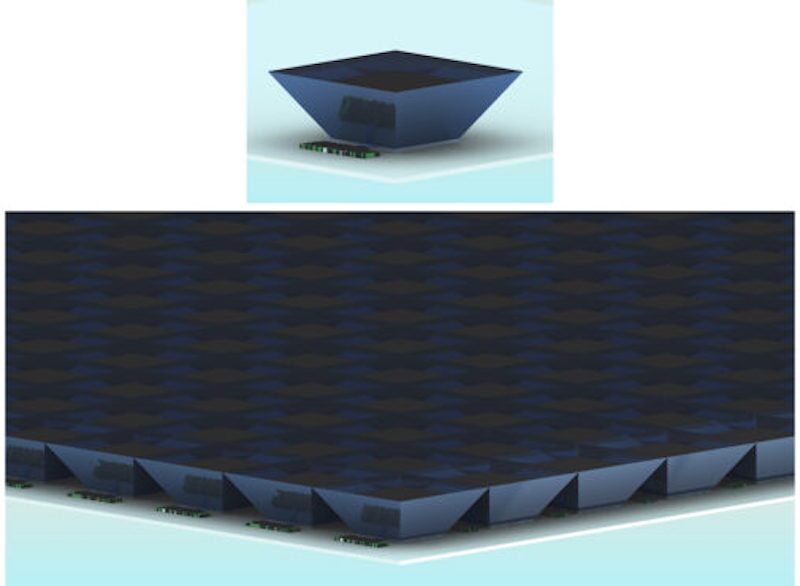Solar cells are an increasingly important source of renewable energy, but there’s still room for improvement. Stanford engineers have now developed a pyramid-shaped lens that can focus sunlight from any angle onto a solar cell, keeping it collecting power from sunrise to sunset.
Solar cells work best in direct sunlight, which means many of them might only have a few good hours of energy generation in them per day. Others maximize their working time by actively moving to follow the Sun across the sky, but that consumes energy and adds mechanical complexity.
For the new study, the Stanford team set out to develop a passive technology that can collect sunlight that strikes it from any angle, and concentrates it towards the solar cell beneath. The end result is an array of inverted-pyramid-shaped structures that the team calls Axially Graded Index Lenses (AGILE), which would form a layer that replaces the protective top surface of a solar cell.

In tests, the AGILE prototypes were able to capture more than 90 percent of the light that hit its surface, focusing it so that it’s three times brighter by the time it reaches the solar cell. The team says that this system could improve the efficiency of solar cells by allowing them to collect indirect sunlight, as well as boosting their output in less than ideal weather and conditions.
AGILE sounds simple enough, but the engineering behind it is quite complicated. Each little pyramid is made up of a stack of different glasses and polymers with different refractive indices – essentially, each layer bends the incoming light to a different degree. The top layer has a low refractive index to allow the light to enter from any angle, but each step down bends it a little more, until it focuses on the solar cell below. The sides are mirrored to bounce any wayward light back where it needs to go.

These multiple materials also allow the device to capture a wide spectrum of light, from near-ultraviolet to infrared. The team also had to make sure the materials worked well together – for instance, that they expand in heat at similar rates so as not to crack the device. Even using several materials, the team demonstrated that AGILE can be 3D printed.
The team says that the new system could help expand the places where solar energy can be used, reducing both the cost and the land needed. AGILE could even improve solar cells for spacecraft.
The research was published in the journal Microsystems & Nanoengineering.
Source: Stanford University






